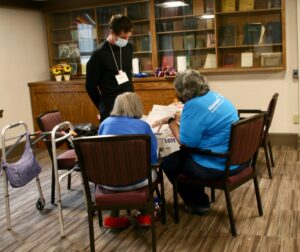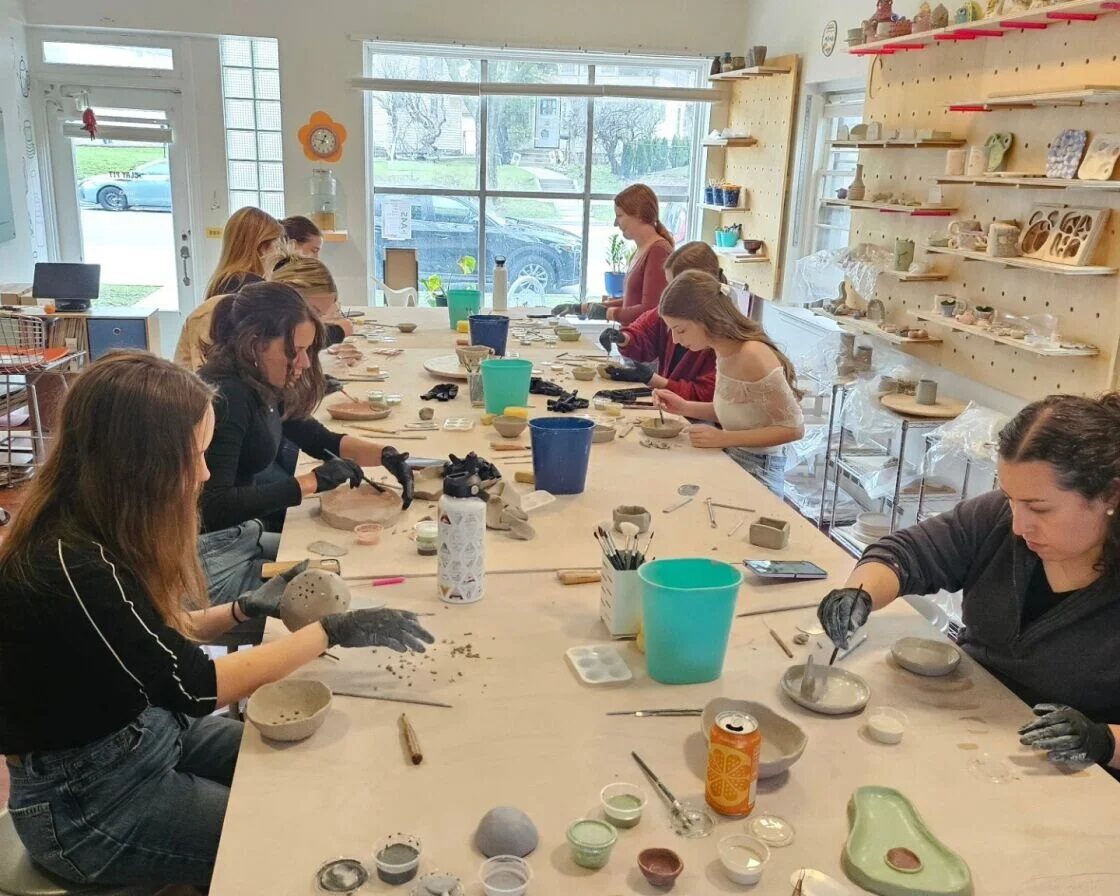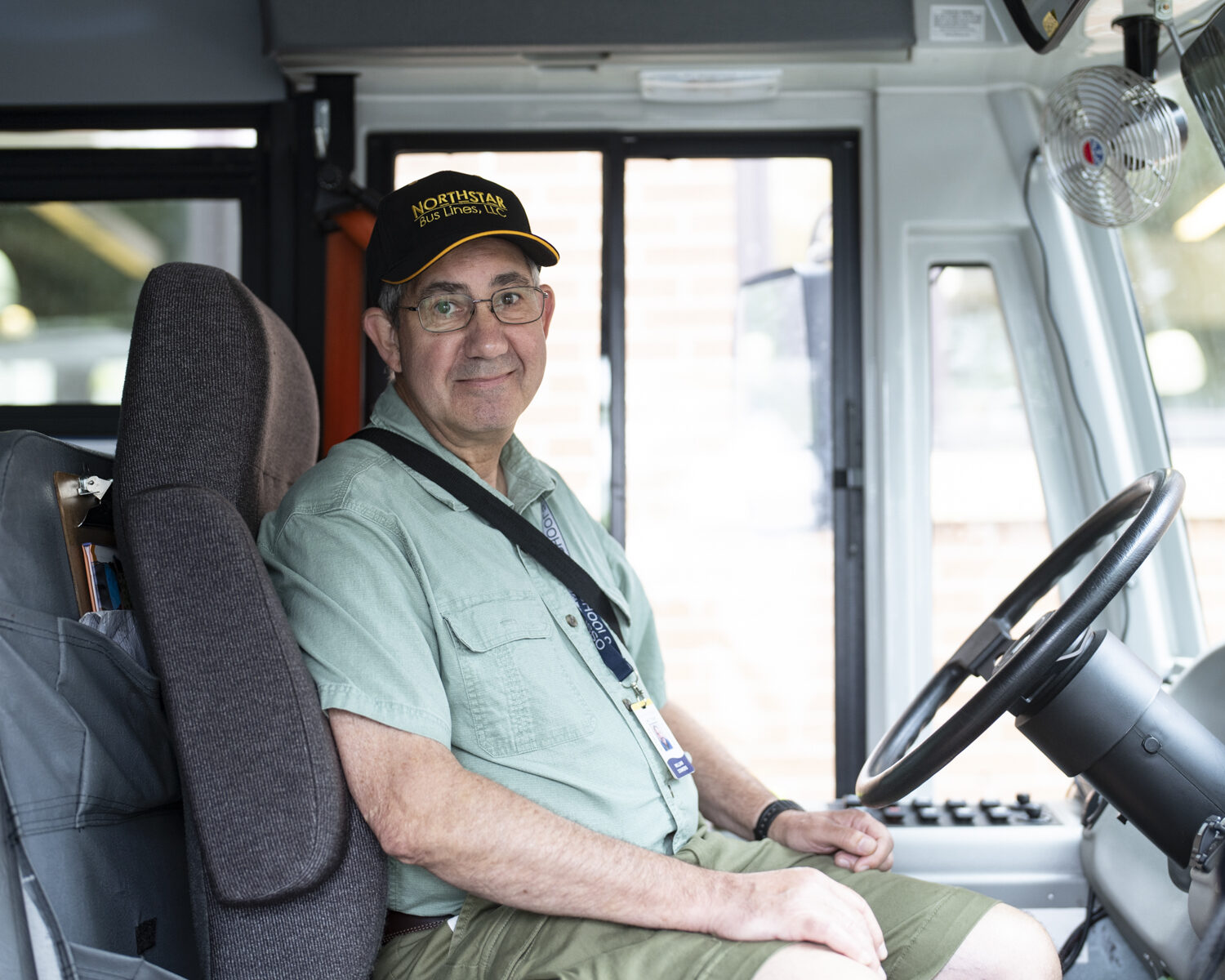
Two team members help a voter.
BY STEPHANIE FOX
For most people in Minnesota, getting to the polls to vote means driving (or biking) to an early voting center or to their local precinct on election day to fill out a ballot. Easy-peasy. Minnesota has same-day registration and does not require registered voters to show an official photo ID. That’s why 81.3% of Minnesotans voted in the 2020 election, the highest (again) in the country. The Minnesota secretary of state’s office estimated that 60.66% of voters turned out for the usually sleepy midterms in 2022, which would come to 2,511,617 estimated voters out of 4,140,218 who were eligible.
But for some, the chance to make their voices heard is more difficult. Residents of some assisted care facilities count on specially trained election judges, people who show up early to help these folks cast their vote.
“The health care facility election judge teams are very important to help assist this population of voters,” said Laura Scholtz, who heads the teams. “We bring the opportunity to vote to residents of health care facilities who likely otherwise would not be able to get to their polling places or request a ballot by mail.”
“This population generally requires a higher level of assistance, provided by a specially trained team of health care facility election judges. It is important that they still have the chance to vote, have their voices heard and their votes counted.”
Some of these residents have no problems filling out their own ballots, but many have vision problems that make it hard for them to read a ballot. Some have physical problems that make filling out the small dots next to the candidate names difficult. Others hoping to vote are not officially registered at the facility’s address and do not have a proper photo ID proving that they actually live there.
This year, during the three weeks before election day, two teams, whimsically titled “Salsa” and “Pesto,” traveled to 17 different facilities where 40 votes were cast and where all were accepted. There are strict rules assuring that there is no deception that might change the outcome of the vote. Even when carpooling from the election center, cars must carry representatives from at least two political parties, assuring that no one can accuse the judges of any deception or voter fraud.
Once at the facility, teams set up tables. At the front table, voters are greeted and asked if they are registered at that location – and many are. If not, members of the facility’s staff can help them register, attesting that yes, this voter actually resides here.
Voters who say they don’t need assistance can take their ballots and fill them out themselves. Voters who want help will head to a table where two election judges, one from each political party, will assist them. And although election judges do see how a vote was cast, they take their vow to keep voting confidential very seriously.
Both judges introduce themselves and double check the paperwork, making sure that everything is correct. One will open the ballot and explain it. (“On this side are federal, state, and county offices and school board members. On the other side are judges.”)
Then they ask if the voter wants help by having the ballot read to them or if they’d like assistance filling out the ballot. Some will say no, but then once they start, they decide they do want help. At that point, one of the judges will read the ballot aloud and the other will fill it out as directed by the voter.
Judges at the front table also help fill out paperwork and hand out envelopes holding their registration form and two special envelopes. One, a manila secrecy envelope, will be used to hold the completed ballot. The other envelope has the signature of the voter.
Once the voter has finished, an election judge will put the completed ballot into the secrecy envelope and seal it. The secrecy envelope and any registration paperwork are put in the second envelope and that, too, is sealed, but will be opened at the voting center and the ballot will be locked away until counted on election day.
At that point, the voter slips their ballot into a slot in a bright red, locked metal box with the words “ballot box” in white letters on the side, looking like something out of an old movie. Just as at a regular polling place, the voter receives an “I Voted” sticker. The ballot boxes remain locked until they are delivered by the teams to the voting center.
At some facilities, such as the Minnesota Veterans Home, the lines to vote are long. There, the polls were open for a little more than three hours and voters were enthusiastic about the chance to vote. Many wore clothing indicating their branch of service or the conflict in which they served. A few of them fought fascists in World War II.
“They’re excited to vote,” said Marie Lorbicki, who has worked as an election judge since 2011. “They feel it’s their duty.”
Many of the election judges, like Lorbicki, have been in this job for decades. Others are new to the position, but all take it very seriously. It’s difficult work and sometimes stressful. But it can be rewarding.
Brian Colwell is in his first year working at care facilities. “When I got my email I didn’t know what we’d be doing,” he said. “I’ve been an election judge at polling places on election day but here, some of these people wouldn’t be able to vote if it wasn’t for us. It was nice helping people vote.”
Lorbicki says that most of the time the staff at the facilities is vital in getting the work done. “If you work through several elections, you get to know some of the staff and when you come back, you connect with them. They really appreciate what we do. During the worst of the pandemic, the facility staff members were responsible for helping voters. But it’s a different relationship. They are the advocates for these residents, but when you assist them with voting it’s different. You can’t have an opinion.”
Lorbicki remembered helping one woman with vision problems who had tried to go to her regular polling place. “They tried, but no one there could help her vote,” she said. “So we read the ballot to her and helped her mark her ballot. It had been several years since she could vote. Just because they have special voting equipment at the polls does not mean that everyone can successfully use it. The assisted care facility team allowed her a voice in democracy.”
(Full disclosure: Stephanie Fox is a member of one of these teams.)






















